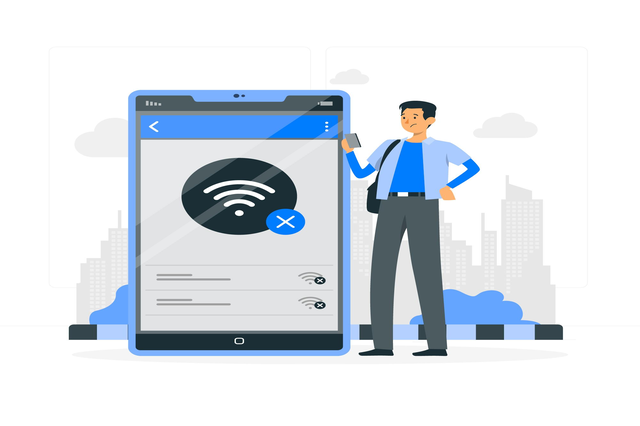What is a Single Page Application? Single-page application vs. multiple-page application?

The convenient, easy-to-update, cloud-compatible, and browser-based web apps are on the rise and substituting native desktop apps fast. There are mainly two types, Single-Page Applications (SPA) and Multi-Page Applications (MPA). Before making any investments, it would be wise to study their architecture and various aspects such as speed, development, security, and more.
Let’s define the two applications and then dig deeper into their pros and cons to help you finalize the one best suited for your unique business specifications.
What is a Single-Page Application (SPA)?
SPA is a website whose current page is updated dynamically rather than getting downloaded in its entirety from a server. A JavaScript file gets downloaded to the browser. Once this file is running and controlling everything on the screen, you wouldn’t have to reload the page anymore. As the user navigates through the web app, all contents and elements that need updating are fetched and delivered.
In a SPA, either all the HTML, JavaScript, and CSS gets retrieved with a single page load, or only the essential resources are dynamically loaded and added to the page as needed. Instead of extracting complete pages, partial pages get retrieved using a network – only the integral elements come up on the page. The page doesn’t refresh at any point in the process and doesn’t transfer control to another page. Some notable examples of SPA are Facebook, GMAIL, Google Maps, and Netflix.
Pros of Single-Page Application
Caching:
A single-page application can cache local data, making it easier to store and retrieve the data without reloading all the resources on the page on every user request. All the relevant data is collected and cached together in bulk. SPA only sends one request to the server; after the first request, all the data gets stored in the cache, providing a far better user experience.

Works offline:
Due to the ability to cache local storage, all the critical data gets stored on the server. The page will retrieve the data from the server, not needing to download all the essential data every single time. The server doesn’t have to send the HTML document back on subsequent requests, just the JSON data. Thereby letting every user access, interact, and work on the page offline.
User experience:
SPA’s avoids interruption of UX between successive pages and makes the web application behave more like a desktop application. All the content on the page appears instantly without any lag. The mobile-friendly page, faster load time with uninterrupted, and easy scrolling provide a more engaging and seamless experience.
Debugging:
SPAs are developed based on popular frameworks such as React, Vue.js, and AngularJS, based on Google Chrome. This makes routine debugging to detect bugs much more seamless. Using easy-to-use developer tools, you can monitor network operations and investigate page elements and the associated data.
Fast:
Single-Page Application loads all the requisite resources in one go. During the user interaction, only specific data sets change as per your actions on the page, which are then transmitted back and forth. But all this time, most resources, like HTML, CSS, and Scripts only load once – making SPAs fast, reducing delays, and presenting information instantaneously.
Independent of the back-end:
A Single-Page Application enables you to decouple the back-end from the front-end. The decoupled setup allows developers to build, deploy, and play around with the front-end without depending on the underlying back-end technology. A Single Page Application interacts with the server through Application Programming interfaces (APIs). You can even reuse the code of either side of the application.
Cons of Single-Page Application
SEO Support:
Search Engine Optimization of a Single-Page Application is much more difficult. Since the page doesn’t refresh, indexing it to extract optimal SEO benefits becomes a hassle; unless done server-side. The AJAX Asynchronous JavaScript and XML method of exchanging data without a page refresh require no separate URLs, making it harder to optimize a single page for search engines.
Enable JavaScript permanently:
JavaScript needs to be present and enabled always. If a user chooses to disable JavaScript in their browser, it won’t be possible to present the application correctly. Disabling JavaScript limits the functionalities of SPA. HTML and CSS could help but won’t be able to facilitate the advantage of using JavaScript.
Security:
Single Page Applications running on JavaScript are more vulnerable, diminishing their security. SPAs are prone to Cross-Site scripting (XSS) attacks, where attackers can inject client-side-malicious scripts into web applications. The inherent vulnerabilities compromise the page’s safety and create loopholes for data breaches of sensitive information.
Browser History:
The “Single-page” model means the forward and backward functions become redundant in SPAs. Any time the user presses the back function, instead of taking them to the page’s previous state, the application directs the user to the last page in the browser’s history. However, you can use JavaScript to build URL history events within the browser or use pushState and replaceState of HTML5 to resurrect the earlier screen state.
What is a Multi-Page Application (MPA)?
Multi-page application is a web application consisting of multiple pages. Every data change or transfer to the server renders a new page on the browser. The browser completely reloads the content of a webpage and downloads the resources again when jumping from one page to another. Due to excessive content and several UI levels, MPAs are much larger and more complex than SPAs.
MPAs, due to the inherent complexity of their architecture are more challenging to develop than SPAs. To improve and sustain the performance of the MPA while handling the considerable amount of content and data transfer between server and browser, developers rely on JavaScript and jQuery. Notable examples of MPAs include eCommerce websites, such as Amazon and eBay.
Pros of Multi-Page Application
Scalability:
Multi-Page Applications with the ability to create hierarchical systems are infinitely scalable. The HTML DOM comes with unlimited capacity with no restriction on the number of pages or extensions you can add. This facilitates the ability to exhibit more information on multiple pages, besides the ability to easily navigate between these pages. The MPA architecture is a dynamically scaling system that can cope with loads of content.
Better SEO Support:
The easy crawling, keyword distribution, and meta tag (title + description) allocation per page makes indexing easier and increases the SEO strength. Using a Multi-Page Application helps you rank higher on Google SERP, which improves impressions, Click-Through Rates, traffic, retention time, and conversions.
Better Analytics:
At some point, you may have to do a dilled-down and data-driven analysis to draw actionable insights about the multiple pages in the application. MPA is far more compatible with analytical tools. The compatibility with Google Analytics makes it easier to track, collate, assess, and extract learnings in real-time to make informed decisions about your business.

Tightly coupled front-end and back-end:
In a Multi-Page Application, the front-end and back-end are not separate. Thus, MPAs require a distinct code base for the front-end and back-end. Unlike in SPAs, developers don’t have the flexibility to reuse the code to simplify the development process and save time and effort.
More Secure:
Almost all MPAs fare better on vulnerability scans and penetration testing when compared to SPAs. Attack vectors in the application are more resistant to outside threats and don’t get exploited that easily to compromise sensitive information. With MPAs, developers only need to secure each page of the app to protect against malicious access to data.
Cons of Multi-Page Application
Performance Issues:
A multi-page application refreshes every time a user interacts and acts (request), which requires all the resources like CSS, HTML, and JavaScript to reload. All the content on the page, including layout, visual content, and textual content, reloads all over again. The constant refreshing affects its speed, creates a lag, and diminishes the performance.
Development Issues:
Developing a multi-page application is not as smooth and streamlined. Due to the sheer number of pages, the development becomes complex. Managing client-side and server-side frameworks alongside the number of functionalities requires more investment and resources, increasing the development timeline.
Maintenance:
The overwhelming number of pages and UI levels, relying on many complicated mechanisms and several technologies, take a higher workload to manage and secure. This increases the maintenance effort, the number of resources, time, and money. For an SMB with a compact IT team, catching vulnerabilities and sustaining quality performance may become a pain in the neck.
Wrapping Up
The decision to opt for either a Single-Page Application or a Multi-Page Application comes down to your business requirements and goals. If speed and development time is what you are aiming for, then SPAs make sense. However, if scalability, through multiple pages, with massive content is what you seek, then MPAs would be a better choice.
Ultimately, whatever you finalize, getting it developed will become a hassle. To avoid unnecessary delays, limited resource availability, and a general lack of strategy and analysis before getting started, entrust the mobile application development to a credible company. ISHIR, with a team of experts and highly-skilled developers, can guide and develop the best application for your unique needs.
The post What is a Single Page Application? Single-page application vs. multiple-page application? appeared first on ISHIR | Software Development India.
